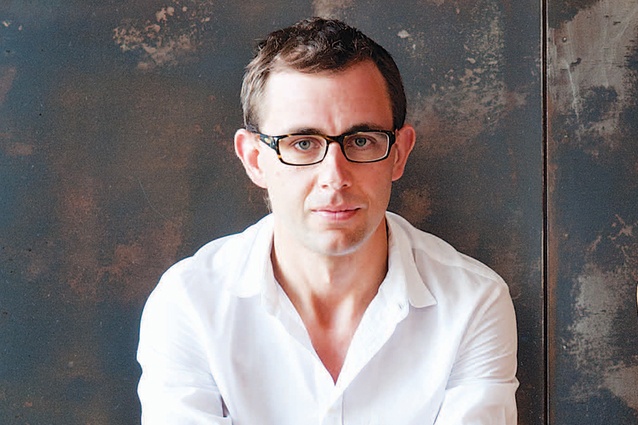Interview with Nathan Goldsworthy
Firstly, can you describe what you do?
I experiment a lot. Every piece I have designed is the result of experimentation and ideas that come from real situations.
When did you get into the business of furniture design?
In 2004, when I was in my final year at university, I started a company called Conscious Design with James Whitta. He has since left the business and recently I changed the business’s name to Goldsworthy to reflect this. Conscious Design started because both James and I knew we wanted to design furniture and wanted to start a company, so that’s what we did. In the first year we were really just learning, as there is a lot that university doesn’t teach you about business.
Did you go to university knowing you wanted to become a furniture designer?
No, I went to design school because I wanted to design cars. To become a car designer, generally one completes an industrial design degree and then goes and does a postgraduate in vehicle design somewhere like the Royal College of Arts in London. It soon became clear to me that it was going to be very difficult to go down that route. And then, while I was doing my industrial design degree I fell in love with furniture.
Why did you choose to study industrial design at Victoria University, Wellington?
Basically, it was because you didn’t need a portfolio to get in. I didn’t study design during high school, I did painting instead, so I wasn’t confident in putting together a portfolio that you needed to apply for Massey University. I am happy that I did go to Victoria, as back then the school was quite theory-based and I enjoyed that.
Does theory now influence your work?
It is always hard to critique one’s own work, but I think that foundation in thinking about social situations has been valuable.
In the last few years I have become interested in how people really use furniture. They don’t use it how it is displayed in a showroom. So the first thing that I try, and some people may not believe me, is to make my products affordable because I want people to be comfortable using them. I want them to think, ‘If my child draws on it, so what?’. The second thing is the idea of how to integrate a product’s assembly elegantly into its design. The Adjutant Desk, for example, came out of the idea that nowadays people move houses more often than we used to. The legs are connected to the tabletop by threads, which engage the user when they are taking it apart. You can disassemble it and then reassemble it, and it is no worse off. You don’t have to re-screw or re-glue anything. The Historian Shelves are based on the same principle.
Do you test the wear of your products?
I live with all my furniture. Recently, the space I moved into had no wardrobe, but I discovered that by moving two of the lower shelves on the Historian Shelves I could hang clothes on the rack and it functions as a wardrobe. I would have never found that out without living with it.
How do you differentiate your work from other New Zealand-designed pieces?
I don’t really think about other people’s work because it doesn’t help with what I do. Of course, I have to be aware of what others are doing, because I don’t want to end up producing the same work as another, which can happen very easily. For example, with the Adjutant Desk, it took me about 18 months to design it, but just a few weeks ago I saw that [Spanish designer] Jaime Hayon has released a table with a similar form of leg. What can you do?
Have you had issues with people trying to copy your work at all?
Yes, there was a person in Dunedin making Tio Chairs – terribly and horribly. We told him to stop, but he refused to accept he was doing anything wrong. Now I try to make things that are hard to copy. As far as I know, there are two companies in New Zealand that have machines that can make the Steel Tables and the people who have them don’t produce any other furniture, and the Adjutant Desk looks very simple, but very few people can cut a thread on timber. I guess I try to protect my investment by innovating.
Do you try to release a certain number of pieces each year?
Yes. I have a basic one-in-five rule, which means that one in five ideas I have are worth pursuing and then one in five of those become a product. That is just how I work, someone else may have a one-to-one rule, but I would be very surprised if someone could make that happen.
You have had some commissions. Do you pursue that type of work?
I haven’t, but I had a few last year. I had an amazing client, a historian, who I originally designed the Historian Shelves for. The client is so important in that process. They were so relaxed and it made the result amazing. I think my best products come from having a real brief – all my ideas come from real situations. If I don’t have a client to produce that situation, I create it.










